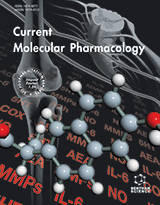Abstract
Background and Objective: The objective of present study is to explore multiple effects of the compound MG17 and relate them to achieve better therapeutic potential against neuroinflammation related disorders. We examined whether our compound is acting through regulating neuroinflammatory mediators.
Methods: We have done some preliminary behavioral studies to shortlist the derivatives using rodent models of peripheral nerve injury in our earlier publication and now we extended our screening studies to explore the test compounds efficacy on other related peripheral neurological disorders such as Streptozotocin- induced diabetic peripheral neuropathy (DPN) and methyl mercury (MeHg) induced neurodegeneration in rats. Pro-inflammatory cytokines interleukin-1β (IL-1β), interleukin-6 (IL-6) and tumor necrosis factor-α (TNF-α) were quantified with RT-qPCR studies and histopathology studies were performed taking tissue samples from MeHg induced neurodegeneration rats. The effect of MG17 was assessed on local and acute inflammation through carrageenan-induced rat paw edema model.
Results: We observed the reduction in nociceptive responses in DPN rats. Pain threshold was reduced greater than 50% in various pain assessment modules. Upregulated pro-inflammatory cytokines which are thought to have a prominent role in neuroinflammation was controlled near to normal level quantified by RT-PCR studies. However, MG17 was able to regulate IL-6 and TNF-α but not IL-1β.
Conclusion: Our results clearly suggest the beneficial potential of compound MG17 through inhibition of pro-inflammatory cytokines upregulation. MG17 could be an intriguing therapeutic approach in diabetesrelated neuro-pathophysiological conditions.
Keywords: Neuroinflammation, Pro-inflammatory cytokines, Streptozotocin, Diabetic peripheral neuropathy, real time polymerase chain reaction.
Graphical Abstract
Current Molecular Pharmacology
Title:MG17, A Novel Triazole Derivative Abrogated Neuroinflammation and Related Neurodegenerative Symptoms in Rodents
Volume: 11
Author(s): Gangadhar Matharasala, Ganesh Samala and Yogeeswari Perumal*
Affiliation:
- Neuropathic Pain Research Laboratory, Department of Pharmacy, Birla Institute of Technology & Science-Pilani, Hyderabad Campus, Telangana,India
Keywords: Neuroinflammation, Pro-inflammatory cytokines, Streptozotocin, Diabetic peripheral neuropathy, real time polymerase chain reaction.
Abstract: Background and Objective: The objective of present study is to explore multiple effects of the compound MG17 and relate them to achieve better therapeutic potential against neuroinflammation related disorders. We examined whether our compound is acting through regulating neuroinflammatory mediators.
Methods: We have done some preliminary behavioral studies to shortlist the derivatives using rodent models of peripheral nerve injury in our earlier publication and now we extended our screening studies to explore the test compounds efficacy on other related peripheral neurological disorders such as Streptozotocin- induced diabetic peripheral neuropathy (DPN) and methyl mercury (MeHg) induced neurodegeneration in rats. Pro-inflammatory cytokines interleukin-1β (IL-1β), interleukin-6 (IL-6) and tumor necrosis factor-α (TNF-α) were quantified with RT-qPCR studies and histopathology studies were performed taking tissue samples from MeHg induced neurodegeneration rats. The effect of MG17 was assessed on local and acute inflammation through carrageenan-induced rat paw edema model.
Results: We observed the reduction in nociceptive responses in DPN rats. Pain threshold was reduced greater than 50% in various pain assessment modules. Upregulated pro-inflammatory cytokines which are thought to have a prominent role in neuroinflammation was controlled near to normal level quantified by RT-PCR studies. However, MG17 was able to regulate IL-6 and TNF-α but not IL-1β.
Conclusion: Our results clearly suggest the beneficial potential of compound MG17 through inhibition of pro-inflammatory cytokines upregulation. MG17 could be an intriguing therapeutic approach in diabetesrelated neuro-pathophysiological conditions.
Export Options
About this article
Cite this article as:
Matharasala Gangadhar , Samala Ganesh and Perumal Yogeeswari *, MG17, A Novel Triazole Derivative Abrogated Neuroinflammation and Related Neurodegenerative Symptoms in Rodents, Current Molecular Pharmacology 2018; 11 (2) . https://dx.doi.org/10.2174/1874467210666170919160245
| DOI https://dx.doi.org/10.2174/1874467210666170919160245 |
Print ISSN 1874-4672 |
| Publisher Name Bentham Science Publisher |
Online ISSN 1874-4702 |
 39
39 6
6 1
1 1
1
- Author Guidelines
- Bentham Author Support Services (BASS)
- Graphical Abstracts
- Fabricating and Stating False Information
- Research Misconduct
- Post Publication Discussions and Corrections
- Publishing Ethics and Rectitude
- Increase Visibility of Your Article
- Archiving Policies
- Peer Review Workflow
- Order Your Article Before Print
- Promote Your Article
- Manuscript Transfer Facility
- Editorial Policies
- Allegations from Whistleblowers
- Announcements
Related Articles
-
Microemulsions and Nanoemulsions for Targeted Drug Delivery to the Brain
Current Nanoscience Histamine H3 Receptor Function and Ligands: Recent Developments
Mini-Reviews in Medicinal Chemistry Peroxisome Proliferator Activated Receptor α Ligands as Anticancer Drugs Targeting Mitochondrial Metabolism
Current Pharmaceutical Biotechnology Neuroimmune Crosstalk in CNS Disorders: The Histamine Connection
Current Pharmaceutical Design Chronic Stress Impacts on Olfactory System
CNS & Neurological Disorders - Drug Targets Status Epilepticus: An Overview
Current Drug Metabolism Classical Neurotransmitters and Neuropeptides Involved in Schizophrenia: How to Choose the Appropriate Antipsychotic Drug?
Current Drug Therapy The Hippocampal Autophagic Machinery is Depressed in the Absence of the Circadian Clock Protein PER1 that may Lead to Vulnerability During Cerebral Ischemia
Current Neurovascular Research Design, Synthesis and Protection Against Pentylenetetrazole-induced Seizure of N-aryl Derivatives of the Phthalimide Pharmacophore
Medicinal Chemistry PET/MR Tomographs: A Review with Technical, Radiochemical and Clinical Perspectives
Current Radiopharmaceuticals 5-HT2C Receptor Agonists as Potential Drugs for the Treatment of Obesity
Current Topics in Medicinal Chemistry Ketogenic Diet Acts on Body Remodeling and MicroRNAs Expression Profile
MicroRNA Asymmetric Dimethylarginine: Clinical Significance and Novel Therapeutic Approaches
Current Medicinal Chemistry Autoimmune Diabetes Mellitus: The Importance of Autoantibodies for Disease Prediction and Diagnostic Support
Current Immunology Reviews (Discontinued) Immunomodulatory Effects of Medicinal Plants used for Vitiligo in Traditional Persian Medicine
Current Drug Discovery Technologies The Molecular Basis of Conantokin Antagonism of NMDA Receptor Function
Current Drug Targets The Canonical Wnt Signaling Pathway in Autism
CNS & Neurological Disorders - Drug Targets Long-Term Benzodiazepine Use and Mortality: Are we Doing the Right Studies?
Current Drug Safety Ezogabine: Development and Role in the Management of Epileptic Seizures
Mini-Reviews in Medicinal Chemistry Synthesis and Biological Evaluation of a New Series of Benzothiazole-Benzothiadiazine Conjugates as Antibacterial Agents
Letters in Drug Design & Discovery


























